Monday, November 30. 2015
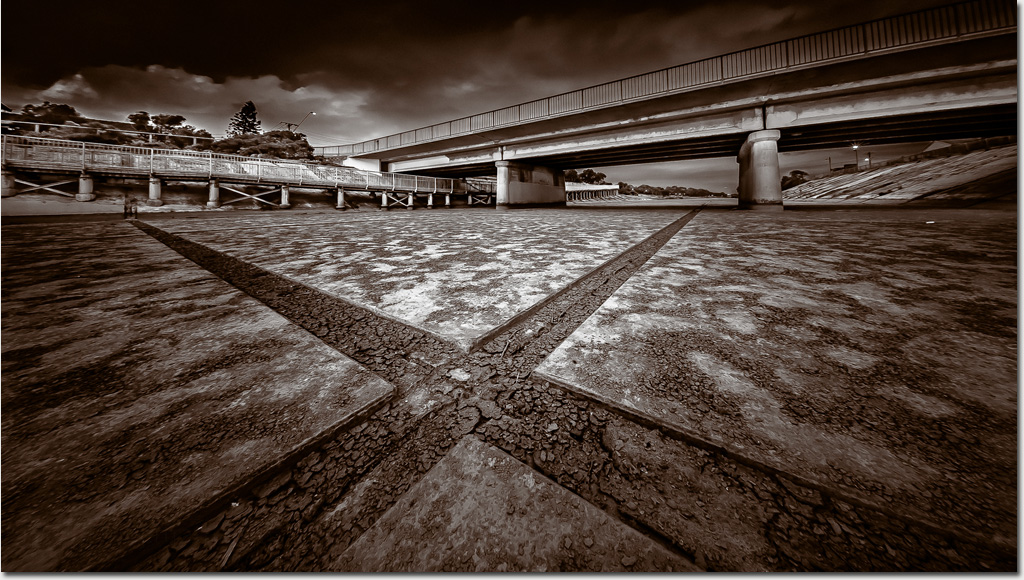
We are about to enter summer here in Adelaide, in the the driest state on the driest continent (according to popular folklore).
During winter I would have been washed away attempting to stand here in the outflow of the River Torrens. Today this parched mud floodway suggests just how dry our summer will be.
There will still be water in the River Torrens around the city and in deep pools downstream, but precious little will find its way to the ocean for the next six months.
Standing here feels strange. Like standing in the middle of a silent freeway once busy with cars and trucks ready to run me down. I like the strangeness. I like the separation from a time before and a time after which would make this image impossible.
Some time well into next year it will flow here again but for now it is the ex-stream of the River Torrens.
Photo: Robert Rath, 'X-Stream', 1.6s f/18 ISO800 15mm
Sunday, November 29. 2015

Dive the shallows of the old Rapid Bay Jetty at the moment and you can expect to be stalked.
This school of Zebra Fish (Girella zebra) started following me around as I searched the general area for other critters. Soon I was so caught up in their antics and carry on that they had me for the rest of my dive.
I'd follow them and then they would follow me. At times I found myself in the middle of the school and then they would break away out into open water only to loop around in big circle to come up behind me again.
Every dive at Rapid Bay is special and this dive the Zebra Fish made it magical.
Photo: Robert Rath, 'Zebra Crossing II', 1/400s f/8 ISO160 15mm
Saturday, November 28. 2015

The wonderful thing about sunsets is we get a brand new and completely unique one every single day.
The sad thing about sunsets is you will never see another one just like the one you saw tonight.
So many times I find myself watching an amazing sunset unfold and not being able to photograph it. Maybe I might have even lamented to a nearby sympathetic ear on the lost moment.
Almost without a second thought the response comes back, "there will always be another". Perhaps if they had lingered on that thought a moment longer they would have realised that there never will be.
Photo: Robert Rath, 'Only Once'' 1/6400s f/7.1 ISO100 150mm
Tuesday, November 24. 2015

I am not sure which location I prefer for Leafy Seadragons, The Bluff or Rapid Bay.
Rapid Bay has an incredible diversity of sea life and never disappoints even if I do not see the critters I have come to photograph. It is a safe bet for a great dive even when the conditions are not so good.
The Bluff on the other hand is rough, has poor visibility, is exposed to southern swells but I never fail to find Leafys here. Even though this dive does not have the variety of life the Rapid Bay offers it has a rugged oceanic appeal that makes me come back time and time again for the Leafys of course but also for the great granite bombies, the thick kelp, seals, crays and of course the usual suspects (a technical term for local South Australian reef fishes).
This Leafy Seadragon ( Phycodurus eques) is being swept back and forth through the kelp and around boulders but doesn't seem to mind at all. This is typical of their environment here and is what makes this dive so appealing.
Photo: Robert Rath, 'Dragon Alley' 1/200s f/3.5 ISO100 15mm
Monday, November 23. 2015
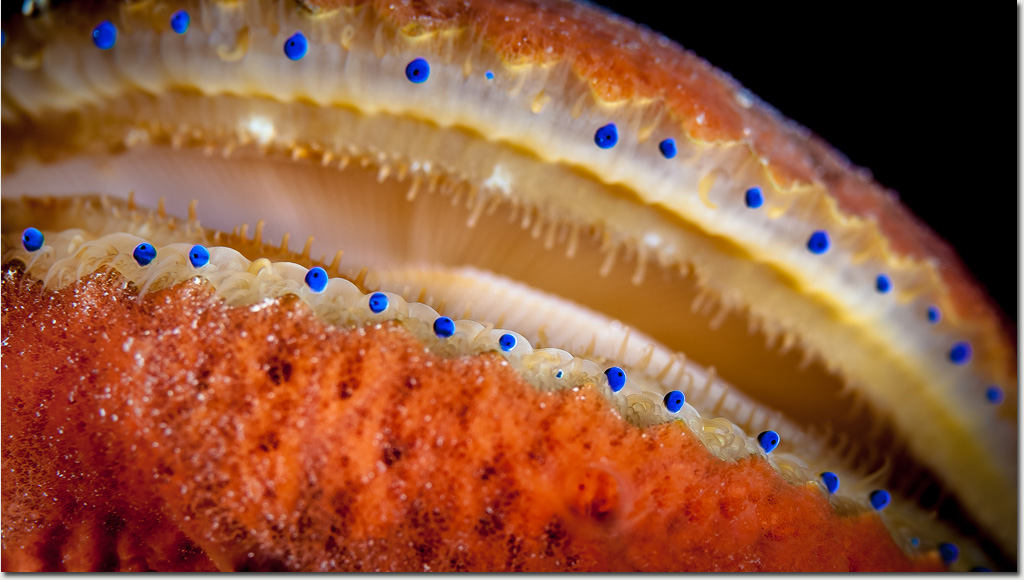
The iridescent blue eyes of the Doughboy Scallop, Mimachlamys asperrima, are little optical marvels. They are in fact more like tiny Schmidt telescopes than conventional eyeballs.
The back surface of the scallop's eye is like a mirror which reflects the incoming light back towards the lens opening. The light sensitive cells of the retina are on the back of the lens and not the eyeball so they actually sense the reflected image back off the mirror.
As far as eyeballs go they are are quite rudimentary and not much more than a pin-hole lens. The internal mirror structure however gives the primitive eye a huge light gathering advantage important for dim lighting conditions, sufficient to detect the approach of predators in near darkness.
Despite their amazing biology, from my point those alluring blue eyes are just stunning.
Photo: Robert Rath, 'The Scallop's Eye' 1/200s f/22 ISO100 100mm
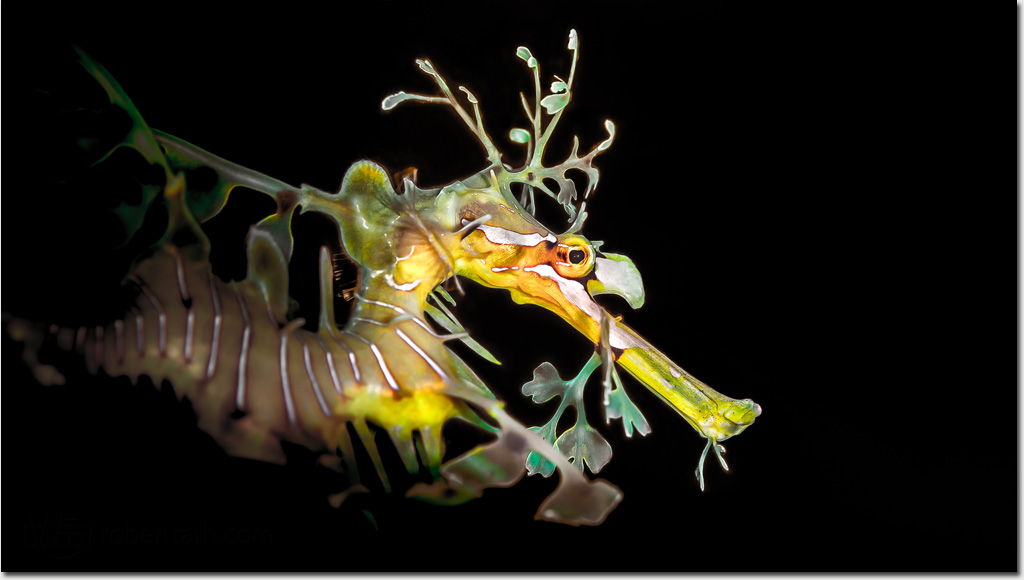
This Leafy Seadragon headshot was taken during a recent daytime dive at Rapid Bay.
This is another example of extreme separation normally associated with a night shot but instead done through strong strobes and removal of the blue luminance.
I expect he'll be wearing dark sunglasses next time I return.
Photo: Robert Rath, 'Headshot', 1/200s f/8 ISO100 100mm
Saturday, November 21. 2015
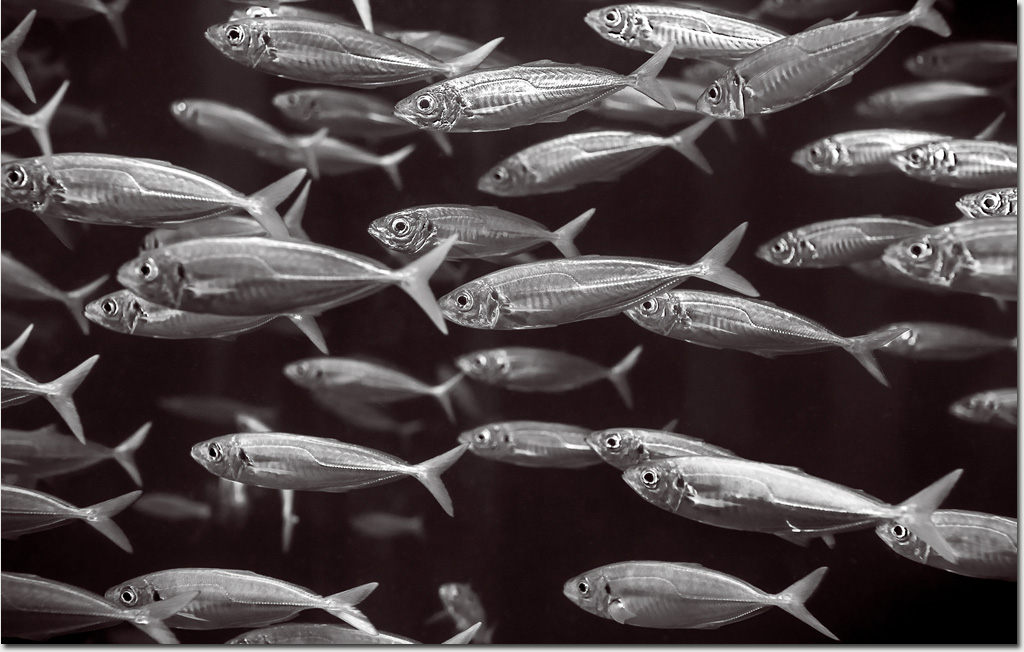
These yellowtail seemed so regimented into their 'march on by' that I could not help but imagine they had been given their marching orders.
Although this looks like a night shot it was actually created in full daylight by using a combination of bright strobe lighting to 'drown out the daylight' and then pulling back the blue luminescence in post production. The result is this striking black and silver contrast between fish and water.
March on by.
Photo: Robert Rath, 'Marching Orders' 1/50s f/3.5 ISO160 50mm
Friday, November 20. 2015
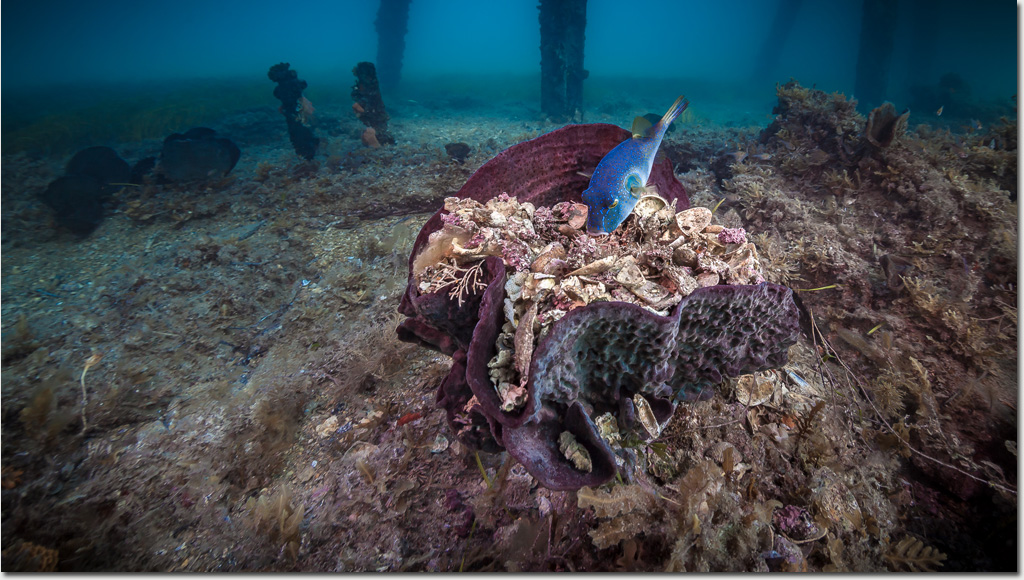
A few weeks ago I first noticed the behavior of a male toadifsh ( Omegophora armilla) collecting objects and filling a discarded bucket with them. On this dive I found another toadfish behaving in a similar way but this time filling a large sponge.
I wonder if they have completed their collections yet?
What happens when they start to overflow?
Have either suitors attracted a mate yet?
This weekend I plan to go back and visit Toad Hall and see how both are fairing.
Photo: Robert Rath, 'Toad Hall' 1/25s f/8 ISO160 50mm
Wednesday, November 18. 2015
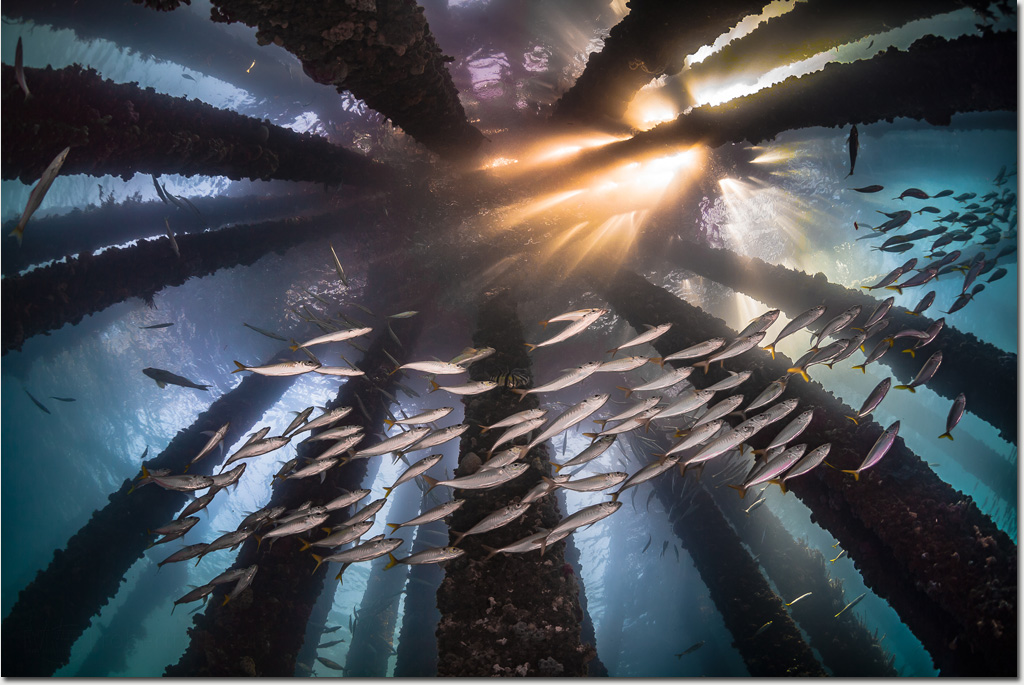
Imagine for a moment that going to heaven for a fish might have something to do with that strange sunlit world above?
Twenty years ago, 'up there', would have been teaming with amateur fishers angling for a piece of undersea action. From the fishes perspective the last place they might wish to go.
For years now Rapid Bay jetty has been slowing collapsing into the ocean. No one sets foot on its structure anymore. Sections of the Jetty are completely gone and no more fishing lines descend from above.
Where once were fishers there are now gulls and cormorants and of course fresh air.
For the fishes heaven will never be 'up there', only death.
Photo: Robert Rath, 'Heavens Above' 1/50s f/8 ISO160 15mm
Tuesday, November 17. 2015
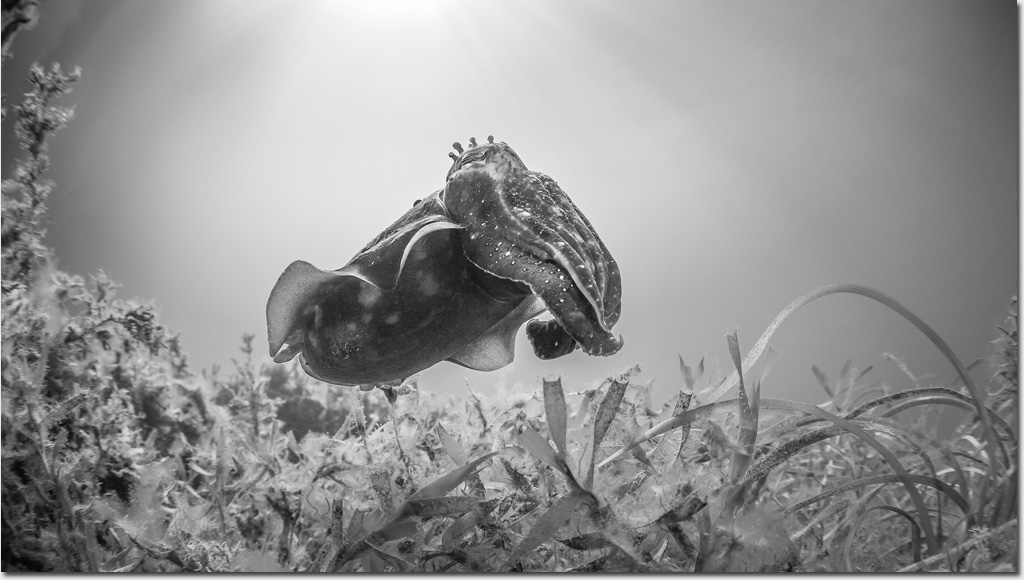 Sepia apama
Sepia apama, the Giant Cuttlefish, is the largest of the cuttlefish and a South Australian draw-card critter. Thousands of cuttlefish congregate to mate in the shallows at the top of Spencer Gulf each winter creating amazing opportunities for divers and snorkelers to observe their antics in only metres of water.
This guy however lives out in the seagrass near Rapid Bay jetty where there was evidence enough he was up to antics of his own.
Photo: Robert Rath, 'The Giant Cuttlefish' 1/200s f/8 ISO160 15mm
Monday, November 16. 2015
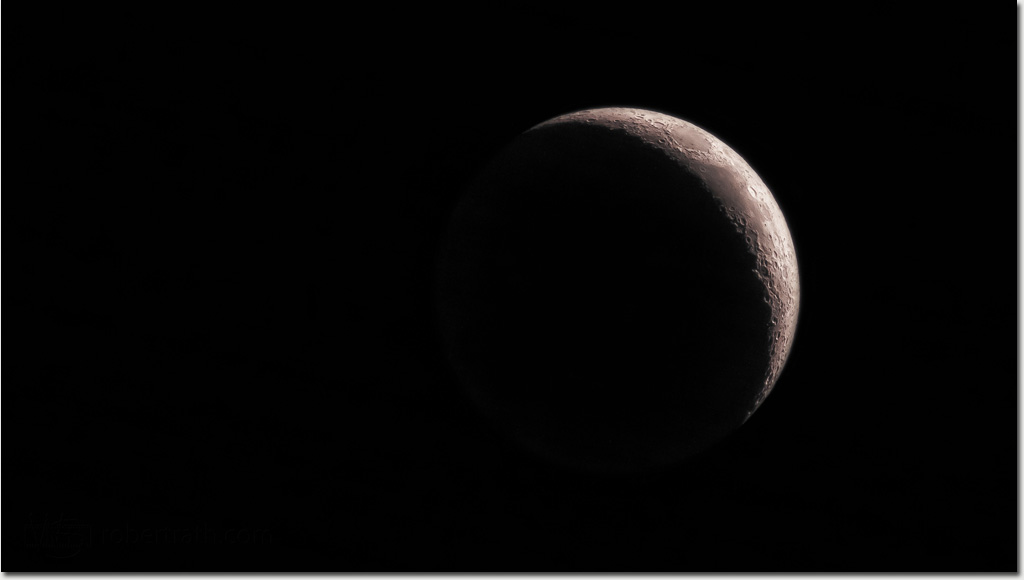
I think I have enough moon images now for an independent collection but just because ... here's a new one.
Last night's waxing crescent is still mostly showing shadow but if you look really closely the almost hint of a full outline gives it a depth not perceived when the moon is full.
Photo: Robert Rath, 'Moon Shadow' 1/40s f/8 ISO160 15mm
Sunday, November 15. 2015
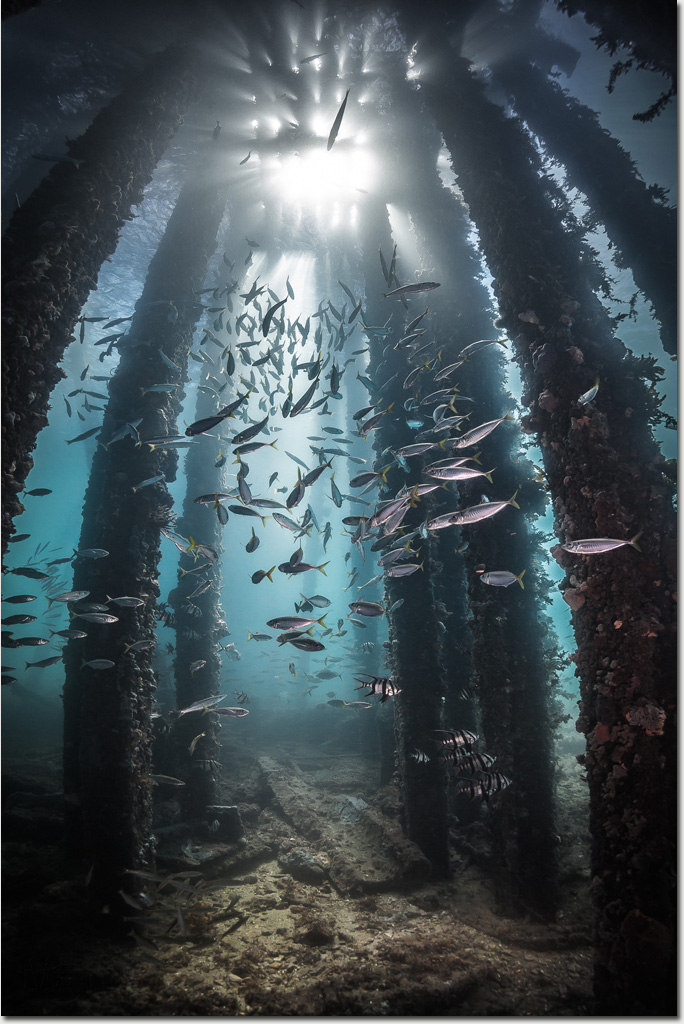
I may be looking up towards the light but that's of no use when it comes to lighting the way. I bring my own.
Conditions at Rapid Bay were sensational yet again with more schooling behavior under the 'Tee' than I have seen for a very long time.
As I arrive at the site I pulled up next a group of very happy divers who were laughing, whooping and exclaiming how exciting it was finally become certified open water divers.
I did not realise it then but later as I swam though forests of schooling scad, marveled at the visibility and was captivated by the dappled sunlight on the sand I realised just how special a dive those brand new divers just experienced.
I hope the conditions did not spoil them as South Australian diving ranges from sublime to ugly depending on the day.
This one was particularly good!
Photo: Robert Rath, 'Towards The Light' 1/40s f/8 ISO160 15mm
Saturday, November 14. 2015
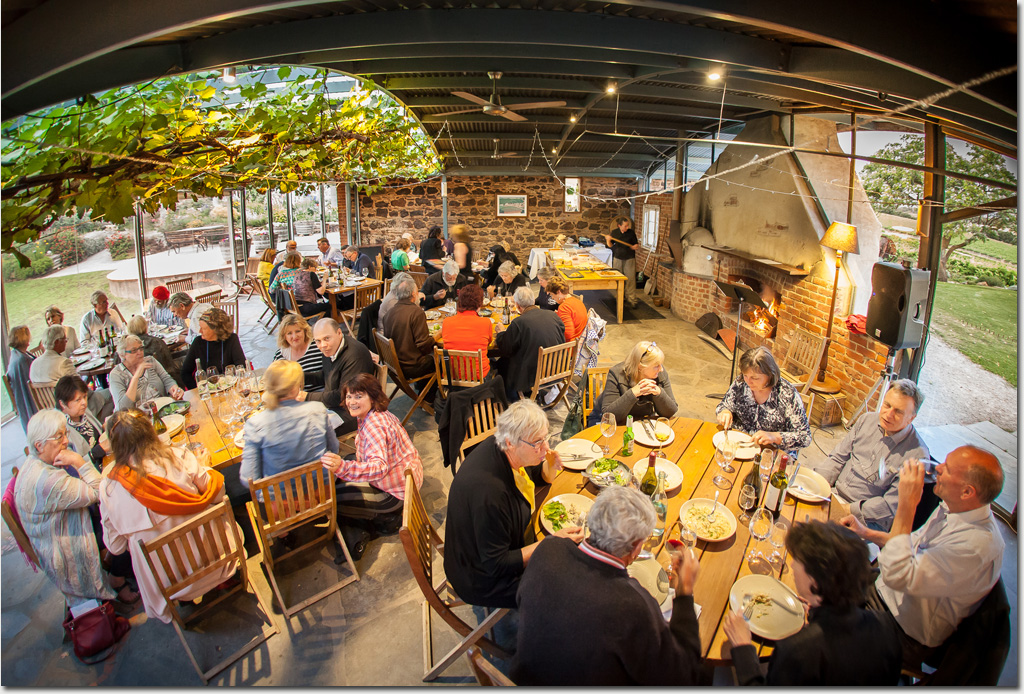
A wonderful gathering of people at Coriole Winery enjoying the wine, the pizza, the fire, the ambiance, the food, the company and of course the poetry.
Poets Amy Bodossian, Jennifer Liston, David Mortimer, Jan Owen and Jude Aquilina entertained us with verse, song, prose, rhyme and whit while the Coriole team kept the pizzas and wine coming.
Looking forward to the next one already.
Photo: Robert Rath, 'Coriole Pizza & Poetry' 1/10s f/3.5 ISO2500 15mm
Friday, November 13. 2015
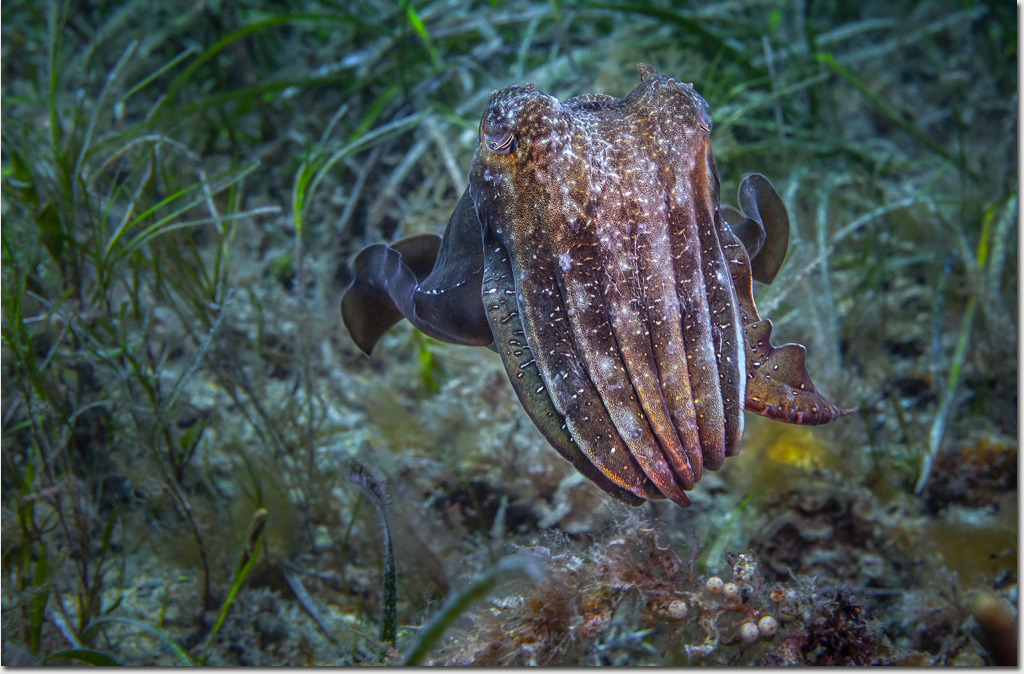
This poor guy is suffering war wounds of love as he and many other suitors battle it out for the available girls.
There seems to be a lot of cuttlefish activity at the moment with both males and females engaging in all sorts of games.
If you look closely here you will notice translucent lumps all over his body where other males have taken chunks. The translucent colour is due to the lack of chromatophores in the wounded area.
He's fairing pretty well I'd say and will be up for a lot more before the season is over.
Giant Cuttlefish, ( Sepia apama), Rapid Bay, South Australia
Photo: Robert Rath, 'Wounded One' 1/100s f/8.0 ISO160 50mm
Thursday, November 12. 2015
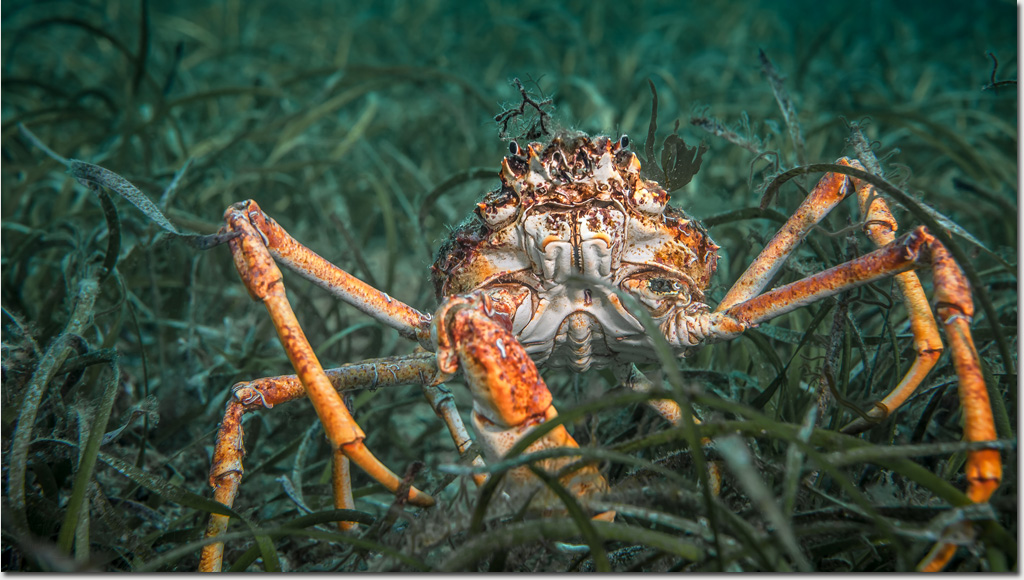
The Majid Spider Crab, ( Leptomithrax gaimadii), is commonly seen critter in South Australian coastal waters.
Equally at home in the sea grass, the rubble or on the jetty pylons, most of the time we see them as solitary scavengers or as mating pairs when the time is right.
There is however a certain time of the year when they come into the shallows in their thousands as walking wall of spider crabs two or three deep and tens of meters wide.
Just not today.
Photo: Robert Rath, 'Picking Through The Grass' 1/100s f/5.6 ISO160 50mm
Tuesday, November 10. 2015
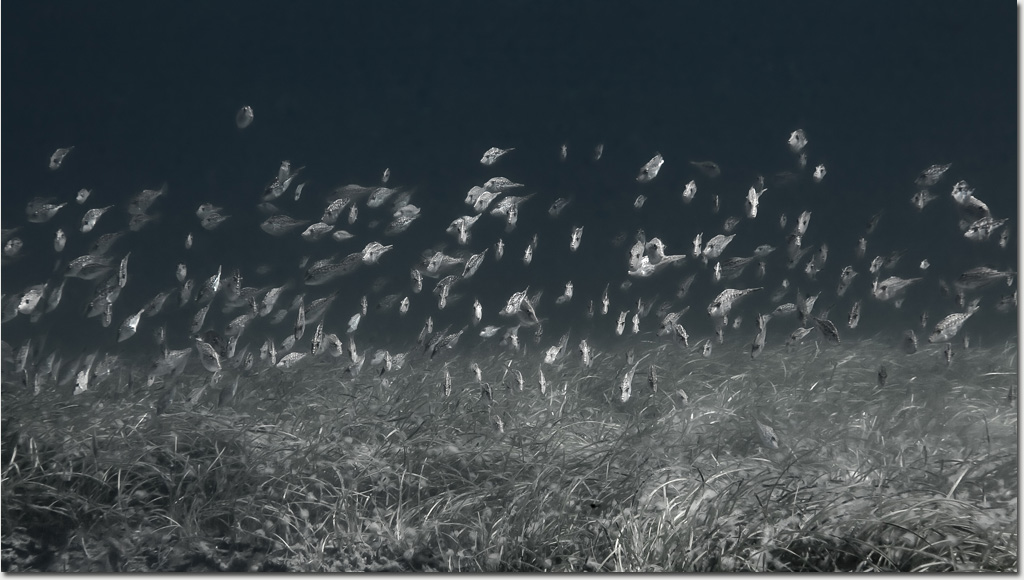
Most divers at Rapid Bay perform the usual ritual of crossing the sand from the new jetty to the old before really starting to pay attention to their surroundings.
Granted, the old jetty is certainly the draw card here but take the time instead to head off in a different direction, over the seagrass beds and it is an entirely different experience.
The seagrass is home to all sorts of interesting critters most of which you have to look carefully for as they hide among the grasses but not the leatherjackets.
Toothbrush Leatherjacket, ( Acanthaluteres vittiger), Rapid Bay, South Australia
Photo: Robert Rath, 'Meet The Leatherjackets' 1/100s f/13 ISO160 50mm
Monday, November 9. 2015
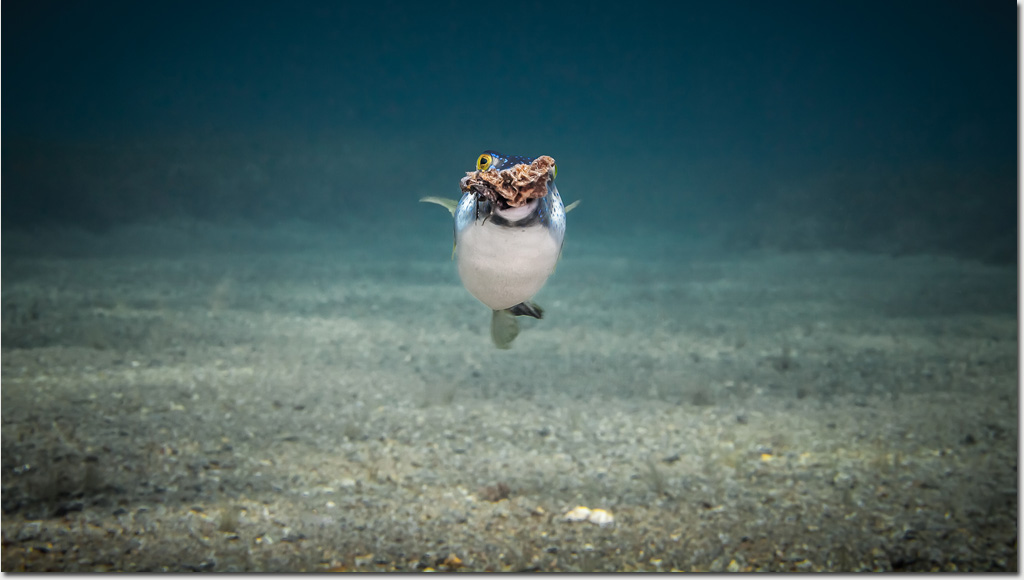
Just like people, there are fish which collect things to show off.
I first spotted this Ringed Toadfish ( Omegophora armilla) guarding a large white fishing bucket resting on the sand near Rapid Bay jetty. Wondering what was so interesting about the contents of the bucket I swam over to take closer look.
Initially the toadfish swam away but not very far and then tried to swim behind me and back to his bucket again. I backed off a little, settled down on the sand and waited.
He soon came back, inspected the contents of his bucket and then swam over to a small broken chunk of coral nearby. After examining it for a moment he proceeded to pick it up in his mouth and swim back to the bucket again where he dropped it in on top of the rubble already there. It was nearly three quarters full and I can only guess that he must have been responsible for filling up that bucket right from the beginning.
A fellow diver suggested it was some form of mating behavior as he had seen other toadfish trying to fill more natural objects such as sponges with rubble such as shells and grit and broken coral.
With his big white bucket filled with rubble this guy is obviously out to prove that size really does matter.
Photo: Robert Rath, 'My Rubble' 1/100s f/11 ISO160 50mm
Sunday, November 8. 2015
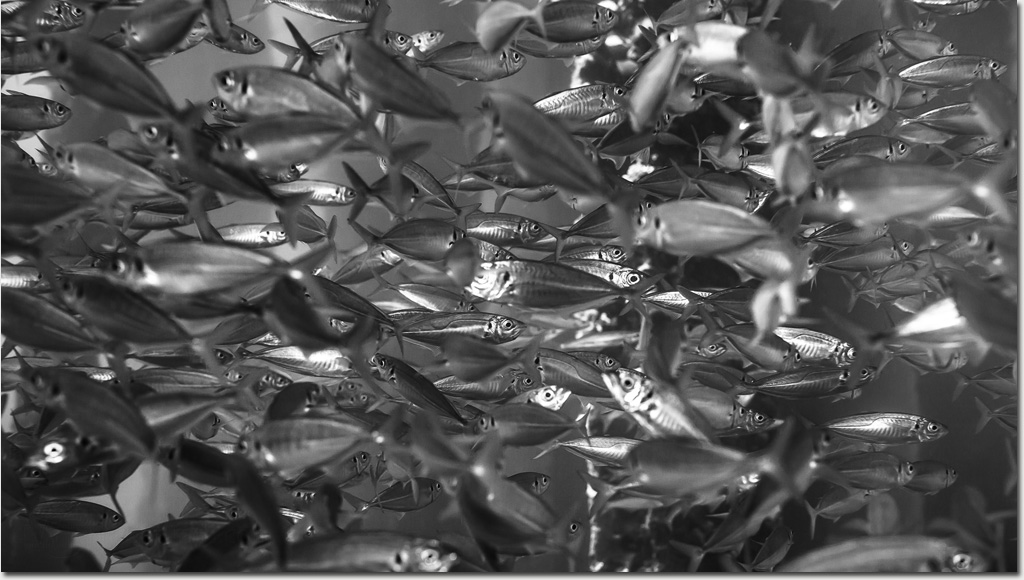
Rapid Bay did not disappoint us this weekend with 10m visibility, minimal currents, warm weather and even the water is not so cold anymore.
Hanging around the t-section of the old jetty we discovered a huge school of Yellowtail Scad ( Trachurus novaezelandiae). Initially they were timid but after a while they became used to us, allowed us to swim through them as they parted only to reformed behind us.
Another beautiful diving experience.
Photo: Robert Rath, 'In The Can' 1/100s f/4.0 ISO160 50mm
Saturday, November 7. 2015
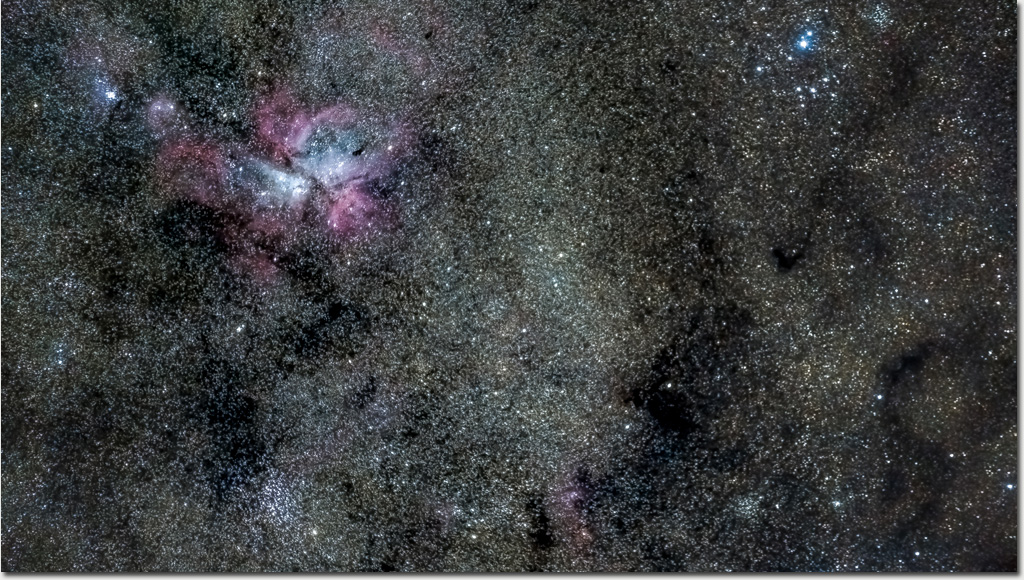
Another look on the amazing Eta Carinae Nebula to be seen in our southern night sky.
This fabulous structure can be seen in one of the most visibly dense parts of the Milky Way. There are 10s of thousands of stars visible here creating patterns of textured starlight, seemingly empty voids and the stunning Eta Carinae Nebula 10,000 light years away.
Photo: Robert Rath, 'Eta Carinae II' 30s x30 f/2.8 ISO1600 200mm
Thursday, November 5. 2015

Too focused on his own subject to notice he was the subject of mine.
Photo: Robert Rath, 'Focused' 1/125s f/2.0 ISO640 50mm
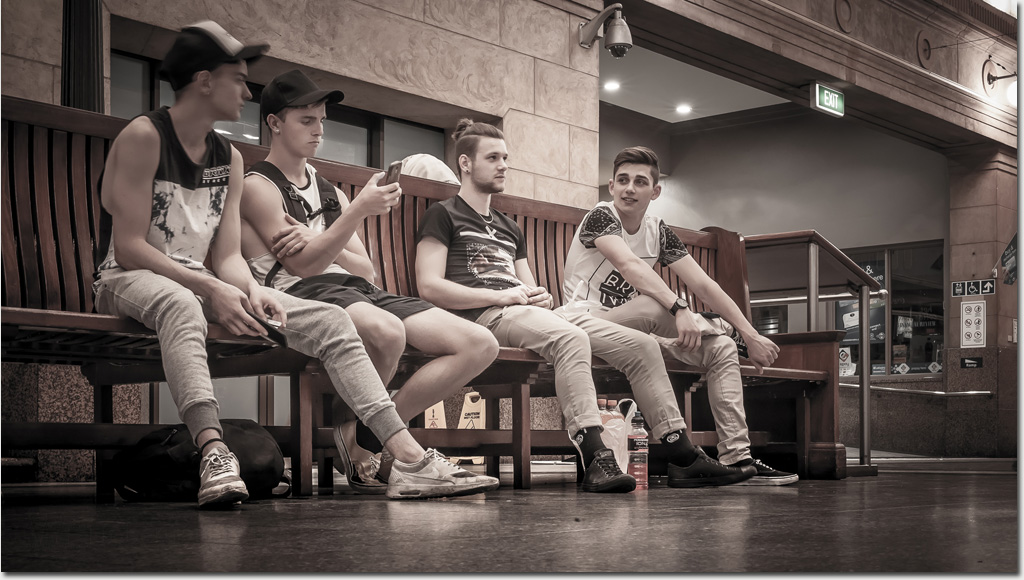
Every one of these boys seems to be in a different world.
One in a daydream, one with the group, one in virtual world and one peering into it from a distance.
Maybe it's a guy thing but I regularly see a very different dynamic between groups of boys and girls.
... just fun to notice.
Photo: Robert Rath, 'Boy's Night Out' 0.5s f/16 ISO800 50mm
Tuesday, November 3. 2015
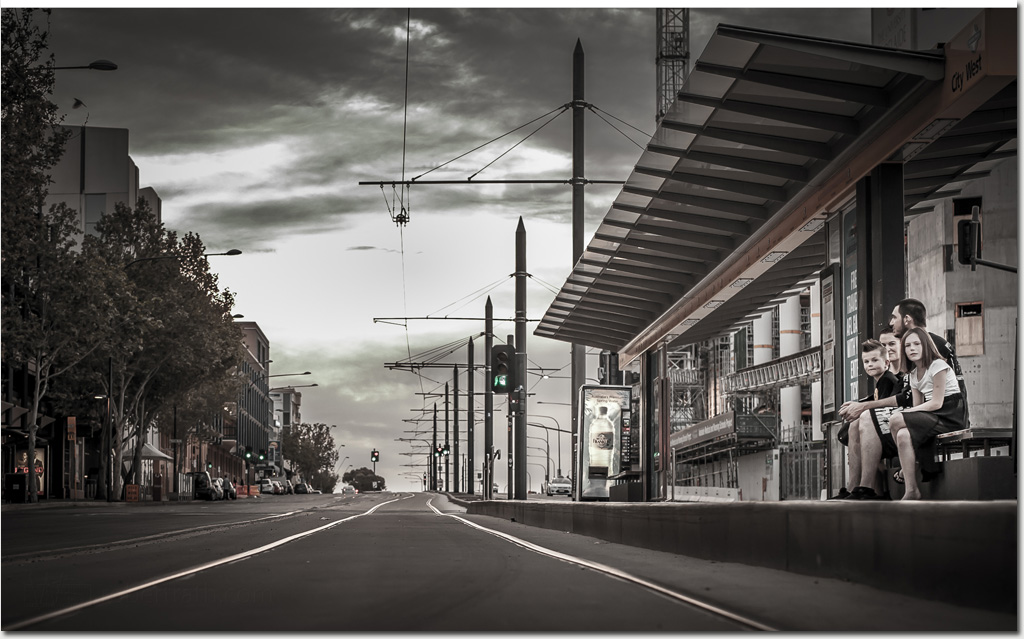
Getting comfortable with taking street images is not coming easy for me.
Just the other day I was accosted by a man accusing me of taking photographs of his daughter. Rather than stand my ground I took the easy route of showing him the images I had been taking. No apology was forth coming, just a grumpy huff as he pretended it was no big deal.
My friends, peers and role models all seem to have different, sometimes opposing and often very strong opinions about taking photos of people in public. From suggestions such as quick and discrete, use a camera phone, ask permission first or simply don't do it there seems no simple way around it than to use my judgement and be prepared to justify myself if challenged. Some of the most powerful story telling street images I have see were either taken without the subject's awareness,r under sufferance or with indifference. How many of these powerful moments were lost because the photographer 'broke' the moment?
I captured this image of a family waiting for a tram on North Terrace. They all seemed lost in individual daydreams until I was spotted lying prone in the middle of the tram line. Moment broken perhaps.
I'll see where this experiment of street images goes. Perhaps I'll get more comfortable or perhaps I will abandon it as too stressful. Time and trials and images will tell.
Photo: Robert Rath, 'Waiting', 1/160s f/3.2 ISO640 50mm
Monday, November 2. 2015
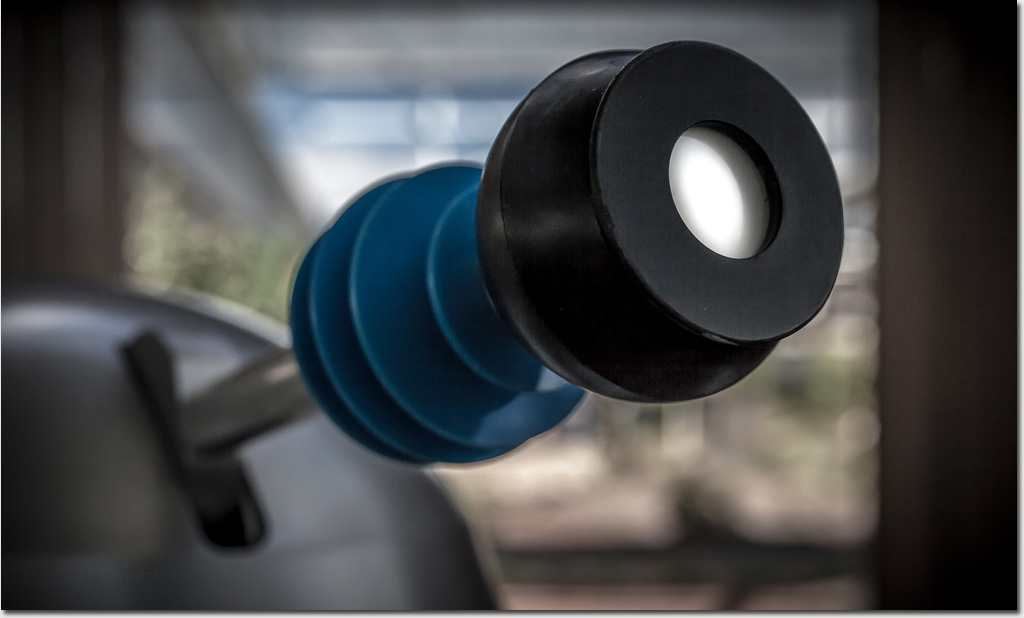
The weekend's Adelaide Mini Maker Faire was a wonderful opportunity to explorer everything crafty, geeky and techie.
There were 3D printers, steam-punk appliances, electric vehicles, Lego, robots, maker workshops and an incredible collection of really cool people doing really fun and interesting stuff.
... and of course there were Daleks, ... lots of Daleks!
Photo: Robert Rath, 'The Exterminator', 1/3200s f/4 ISO500 50mm
Sunday, November 1. 2015
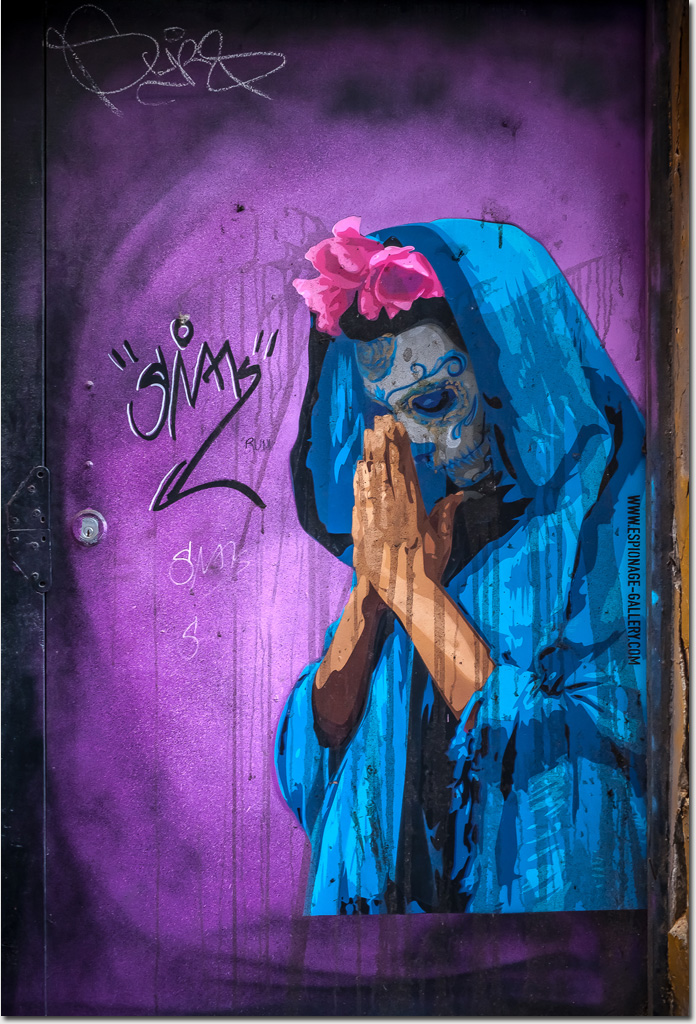
The event we call 'Halloween' is becoming bigger and bigger in Australia every year. For us this is a relatively new thing.
As kids growing up in a small South Australian country town, Halloween was some strange ritual played out in American movies involving kids dressing up in scary costumes soliciting treats from well prepared locals.
I recall one of my enterprising friends (thank you Squish!) tried to organise a 'Trick or Treat' expedition one Halloween evening which ended up very badly with confused locals and several threats to call the police.
Now I see Halloween embraced everywhere. I wonder how many caught up in the costumes and pranks really understand its origins.
Image by artist Joshua Smith, found in an Adelaide alleyway.
Photo: Robert Rath, 'Halloween Prayer', 1/50s f/2.5 ISO640 50mm
|